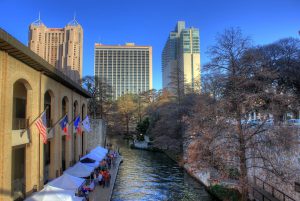Dallas is in one of the largest metropolitan areas in the country, but even so, there’s plenty of good birding around if you know where to look.
Multiple nearby lakes, rivers, and creeks create attractive woodland habitat for waterfowl and songbirds. So what are the best places around Dallas to see birds?
The Best Dallas Birding Hotspots Include:
- Village Creek Drying Beds
- White Rock Lake
- The Heard Museum & Wildlife Sanctuary
- McInnish Park
- Trinity Audubon Center
September through May is the best time to look for birds, since they aren’t as active during the summer heat.
Village Creek Drying Beds
Entrance Cost: Free
Hours: 7:30am – 4pm
Spotting Scope Recommended?: Yes
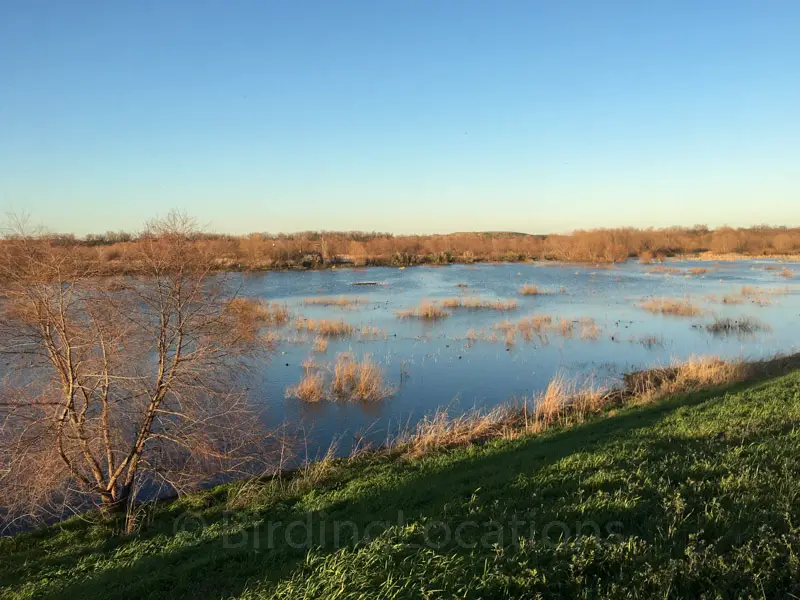
Located in north Arlington, west of Dallas, this is easily one of the best spots around to spend one to three hours. Bird activity and numbers here are great, and it feels like there’s always something to look at. Once you’re here, you really don’t have to work very hard to get a good list of species going.
The property contains over 30 small ponds, and was created by a local water treatment service. The ponds are a highly attractive habitat for ducks, herons, and blackbirds. The surrounding woodland brings in local songbirds, plus a few hawks and owls.
Winter months will have you looking at American Coots and hundreds of mixed ducks, including Bufflehead and Canvasback. Woodland edges produce plenty of woodpeckers, wrens, and sparrows. Marshy edges on the water often host Sora, Virginia Rail, and Wilson’s Snipe.

Bring a spotting scope if you have one, it’ll be useful for scanning the ponds.
Ducks mostly disappear during warmer months, but heron diversity expands to include Snowy and Cattle Egret, Little Blue Heron, Green Heron, and Yellow-crowned Night Heron. Swallows and Chimney Swifts flutter overhead, and songbirds like Painted and Indigo Bunting, and Blue Grosbeak are active.
Spring and fall migration brings shorebirds like Black-necked Stilts, Lesser Yellowlegs, and Wilson’s Phalarope. Black Tern is a good possibility. Flycatcher numbers and diversity can be impressive.
Least Grebes have been found breeding at these ponds. Birders used to have to travel south of San Antonio to see these guys, but now they’re just a short drive away for DFW residents. Crested Caracaras shares a similar story, but they’re less common and only very occasionally spotted here.
If you’re visiting for the first time, note that the gravel road that turns off Green Oaks Boulevard is hidden in the trees and is easy to miss. Once you turn in, roll down your windows and go slow because you’ll start seeing and hearing birds right away!
White Rock Lake
Entrance Cost: Free
Hours: Sunrise to Sunset
Spotting Scope Recommended?: Yes

Located just northeast of downtown Dallas, this mid-sized lake is a popular winter birding destination. It’s well known among birders for attracting unusual and rare gulls like Little Gull, California Gull, and Iceland Gull.
A spotting scope is needed here to fully enjoy the lake, since many birds will be just out of binocular range on the open water.
The best and most popular spot to bird watch is the south side around the dam, and the spillway below. Paved sidewalks right along the water edge make getting around easy.
The woodland below the dam is also good for finding birds like woodpecker, sparrows, Brown Creeper, and Brown Thrasher.

The best place to park is at the spillway, called “White Rock Lake Waterfall Parking” on Google Maps. It fills up with local visitors very quickly, and doubly so on fair weather days. Arriving early at sunrise is key on weekends to getting a parking spot.
If this lot is full then follow the west side of the lake up to White Rock Lake Trail and park just past White Rock Boathouse. If that’s full, T. & P. Hill is the third best option.
From November through March expect to see floating masses of Double-crested Cormorants and American White Pelicans feeding and moving around the lake.

Gulls are common, with probably 99% being Ring-billed Gulls. Ducks are scattered around, usually hugging the shoreline in more sheltered coves and inlets.
The trees at the bottom of the dam spillway always attract herons, including Black-crowned Night Herons. The shallow running water on the spillway can be good for Spotted Sandpiper.

Check out our full birding guide for White Rock Lake.
The Heard Museum & Wildlife Sanctuary
Entrance Cost: $10
Open Mon – Sat 9am – 5pm
Sun 1pm – 5pm
Closed on Mondays
Spotting Scope Recommended?: No
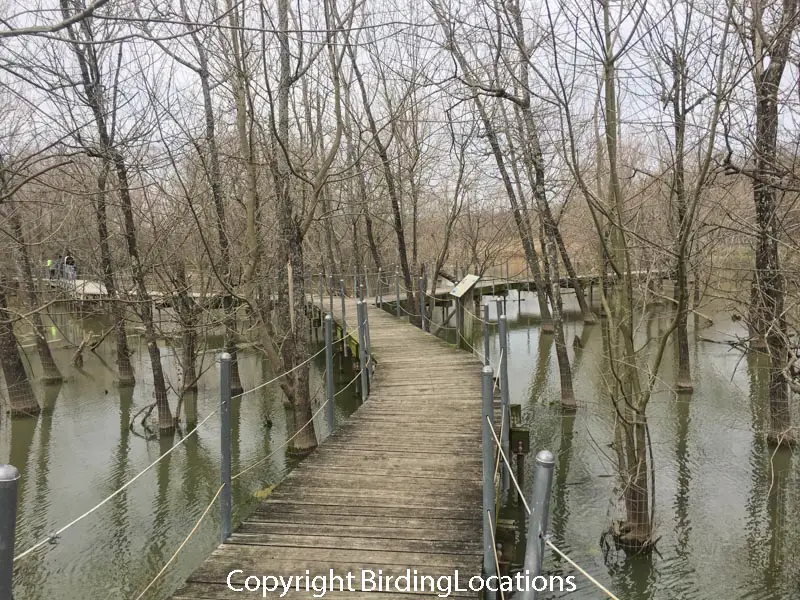
This 289 acre wildlife sanctuary features a great mix of bottomland hardwood forest, open blackland prairie, and an excellent wetlands boardwalk. Here you’ll get a nice mix of birds no matter what season you visit.
Located just over 30 minutes north of downtown Dallas, this is the furthest location on the list, but is a great option if you’re already in that direction. Regardless of which trail you choose, the scenery changes just enough as you walk to keep you entertained the whole time.
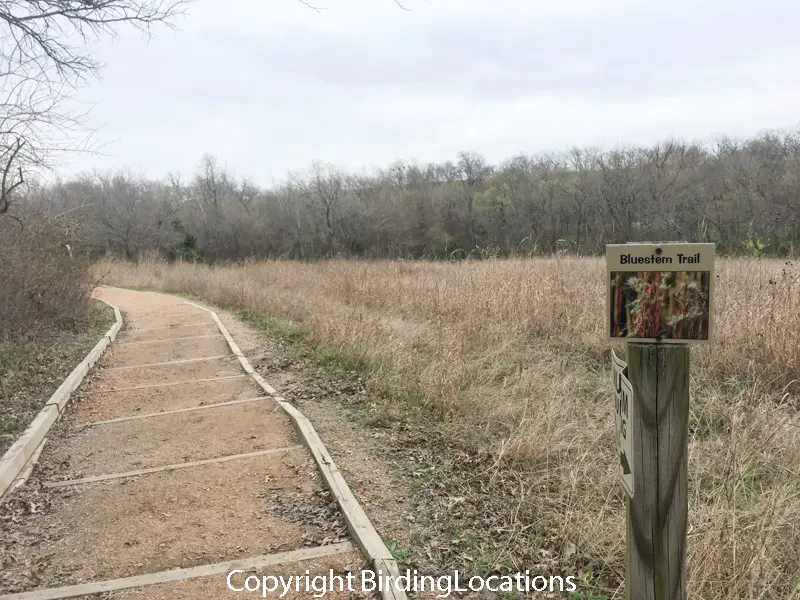
Main highlights here are lots of woodland edge habitat that generate hotspots of bird activity, and the long boardwalk that takes you through a mostly wooded wetland. There’s not many specialty species here that you can’t find somewhere else nearby, but it’s easy to rack up a robust overall species list while you’re here, making it a good “one stop shop” for birders.
If this is your first visit, be sure to head for the Bluestem Trail. When you step outside just behind the main building, turn left as you face the amphitheater and walk through the Animals of the World exhibit. The Bluestem Trail begins at the back of this exhibit, and later connects to the Wood Duck Trail which is where the boardwalk is.
Check out our full birding guide for The Heard.
McInnish Park
Entrance Cost: Free
Hours: Sunrise to Sunset
Spotting Scope Recommended?: No

McInnish Park is a small park with a pond, sports fields, the Elm Fork of the Trinity River across the street, and Elm Fork Nature Preserve opposite the sports fields. There’s a lot packed into a relatively small area. Provided there’s no sporting event ongoing, this park makes for a great 45 minute birding stop.
The pond is the main feature here, and is a great wildlife attractor. The close side is mowed and manicured, making it easy to walk and get up close. The far side is partly wooded, with grasses and reeds along the water edge to provide shelter.
Birds here include ducks, grebes, and Canada Geese. Gulls and terns will swoop by in low numbers, while egrets and herons hunt along the back water line. Sparrows, wrens, and Common Yellowthroat may be hiding in the grasses and reeds.
Across McInnish Park road is a strip of vegetation that is often wet and boggy. Walking along this for 5 – 10 minutes can get you a few extra species, especially sparrows and wrens.
The open spaces along the sports fields often have a mix of birds on the ground including meadowlarks, Killdeer, American Robin, and in the winter American Pipit and Savannah Sparrow.
Elm Fork Nature Preserve to the south is great for woodland species.
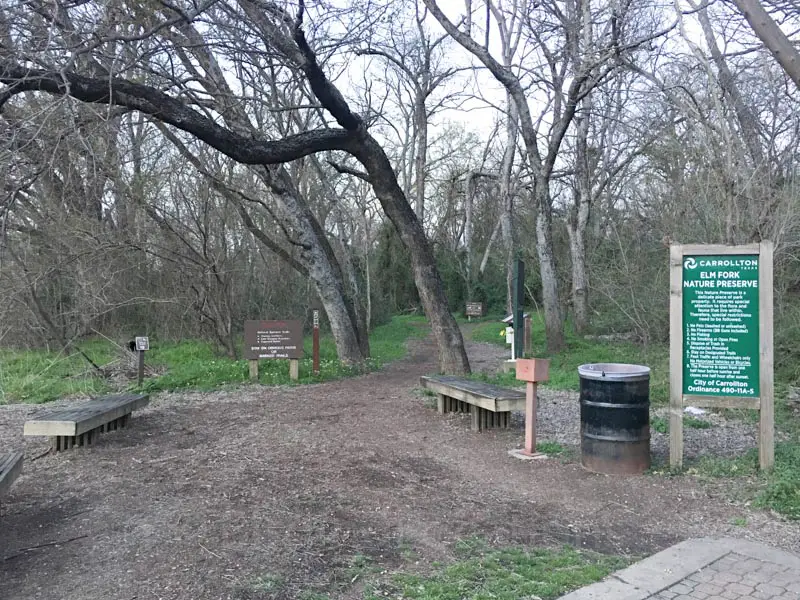
Simply walking the wooded edge along the parking lot can be productive by itself. Barred Owls can be found here at or just after sunrise.
Check out our full birding guide for McInnish Park.
Trinity River Audubon Center
Entrance Cost: $6
Mon – Fri 9am – 4pm
Sat 7am – 3pm
Sun 11am – 5pm
Spotting Scope Recommended?: No
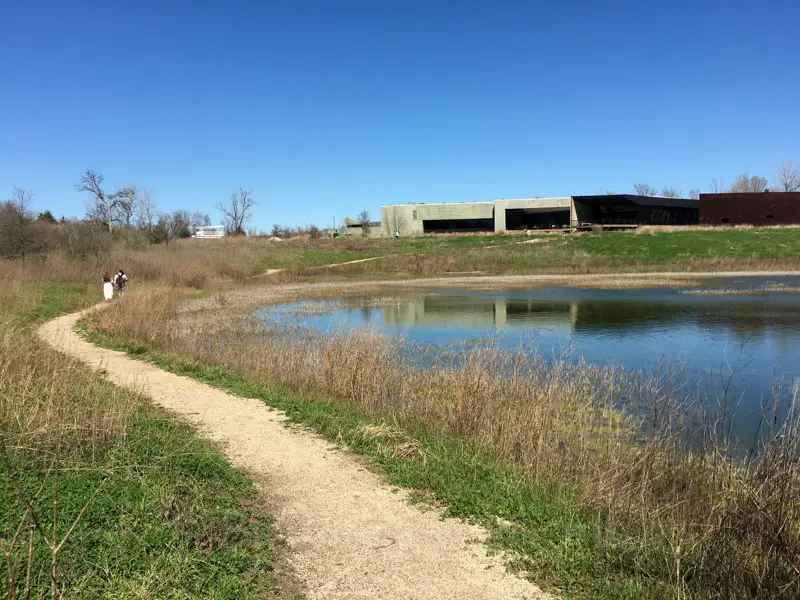
Located just southeast of downtown Dallas, you know this is a good bird watching spot because “Audubon” is in the name. This property was designed specifically to attract birds and make viewing them easy.
The beautifully constructed visitor center is the entrance point to the boardwalk that winds through a man made wetlands and a set of small ponds. You’ll get good looks at coots, ducks, herons, plus frogs and turtles.
Further behind the visitor center is a woodland along the Trinity River, which you can walk to and watch for flyby Belted Kingfishers and Red-shouldered Hawks.

Up the hill from the visitor center is an open prairie that attracts kingbirds and Scissor-tailed Flycatcher in the summer, and sparrows and American Kestrels in the winter.

This property isn’t that large, and can be covered in about an hour and a half. The ease of access throughout the property is a major plus, as minimal walking is required to hit all habitat types here. It’s a great way to experience nature in the middle of an urban area.
Check out our full birding guide for the Trinity River Audubon Center.
Other Good Options
Honorable mentions that didn’t make the list include Lake Lewisville Environmental Learning (LLELA), Lake Lewisville Park, John Bunker Sands Wetland Center, and Hagerman National Wildlife Refuge.
These were excluded mostly due to their distance from downtown, but are all worth visiting. Especially Hagerman.
Wolf Springs Road to the south is also great if you enjoy birding by car.
Check out our Texas Hotspots Map for more great birding locations in the area.



